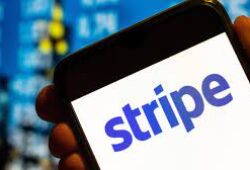Arrival nabs $300M lifeline, but is still seeking more funds
 Posted On
Posted On
Troubled electric vehicle company Arrival has secured a $300 million lifeline to help it stay in business until the end of 2023, but not beyond.
The company is seeking additional dedicated funding to develop its XL vans for the US market and begin production in Charlotte, North Carolina by 2024.
Arrival announced $300 million in equity financing from Westwood Capital at its fourth-quarter and full-year 2022 earnings call on Monday.
Shareholders
The company has also scheduled a special meeting of shareholders for April 6 to vote on a number of resolutions, including a reverse split shares to help it regain compliance with Nasdaq.
Arrival originally reported earnings last week, but delayed hosting an analyst call until today to finalize the Westwood transaction. And fair enough considering how in the red Arrival is.
The pre-earnings company has been burning cash at a surprising clip, yet it still has its hand out for more. Arrival probably wants to use as little of Westwood’s fountain as possible so as not to give away too much property.
John Wozniak, Arrival’s chief financial officer, said the company hopes to raise an additional $500 million — $100 million to $150 million by the end of this year to fund the XL program.
Investors
Arrival hopes that the additional liquidity, the promise of potentially high-margin XL deliveries and other cost-cutting measures will make it an attractive target for investors this year.
Despite many shortfalls in meeting production deadlines in the past. two months after Igor Torgov, the former chief executive of Arrival, took over as the company’s CEO.
Torgov replaced interim CEO Peter Cune, who was appointed in November 2022 when Arrival founder Denis Sverdlov stepped down.
Torgov immediately led drastic cost-cutting measures, including a 50% reduction in headcount, which is expected to be achieved by the end of March 2023 and will leave Arrival with fewer than 800 employees.
In February, Arrival secured up to $50 million in new equity capital through the sale of common stock to Antara Capital Master Fund, which helped the company reduce its net debt by $121.9 million.
Company
Now, as part of Arrival’s new business plan, the company intends to reduce its targeted cash outlays to a maximum of $35 million per quarter.
Arrival has streamlined its global entity and real estate footprint to focus on the US market and has already exited several leased spaces.
The company also imposed a hiring and spending freeze, including curbs on all new purchase commitments.
Strategy
Arrival has focused all of its efforts on its US product strategy since Q3, when the company decided to shut down production at its Bicester micro-factory in the UK. and instead channel resources into building a micro-factory in Charlotte.
“The larger size of the U.S. utility vehicle market, along with higher average selling prices and margins and IRA tax credits of up to $40,000 per vehicle, create an extremely compelling opportunity for electric utility vehicles in the U.S.,” Wozniak told listeners Monday.
Arrival said the $500 million will help it invest in supplier manufacturing tooling and prototyping, complete equipment procurement and installation, and provide working capital to begin production of XL vans – purpose-built for last-mile delivery – in the US in late 2024.
Meanwhile, Arrival is still working to build 10L vans at its Bicester plant by August – having built two so far.
The goal is to further develop the highly automated manufacturing processes that Arrival has promised will separate its micro-factory model from the standard model of a large assembly line.
The UK-built vans will also be used to accumulate 250,000 kilometers driven on public roads to validate Arrival’s design and components by the end of 2023.
“Due to the large number of components and engineering solutions carried over from the Bicester L van to the XL van, we had a significant head start on the design of the XL vans,” said Wozniak.
“Although the vehicles are obviously different sizes, almost all components for the low-voltage electrical and control system have been carried over.
Similarly, the technical solutions of the body structure, internal closures and some chassis systems were adopted from the Bicester L van.
Sources: Techcrunch | beamstart


